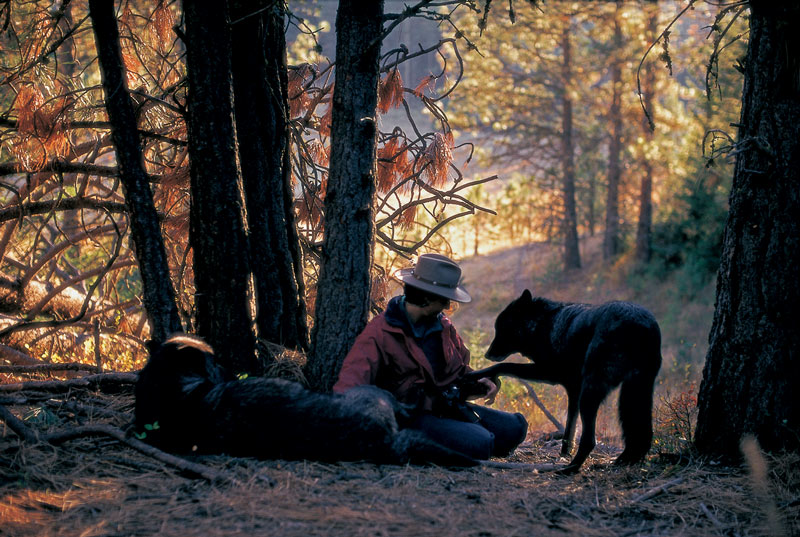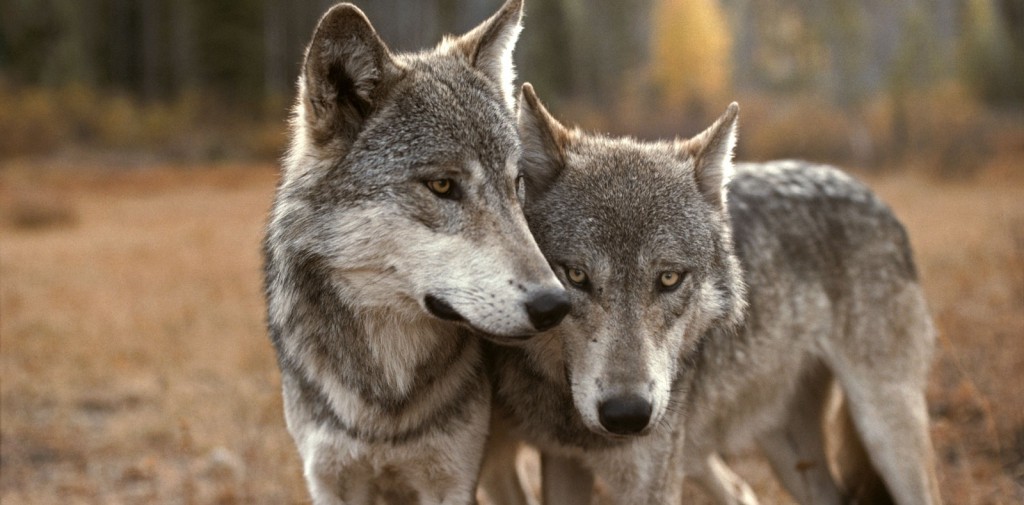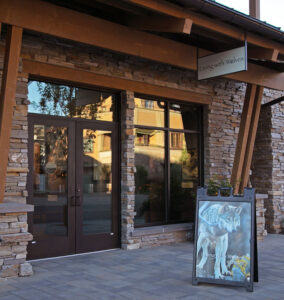
At Wolf Camp, our project was coming to a close. Our permits for the land with the U.S. Forest Service were about to expire and due to the anti-wolf climate created by wolf reintroduction, the permits could not be renewed. We knew from the beginning that we would need a permanent home for the Sawtooth Pack.
Our wolves, by law, could not be set free, but more importantly they also had lost what they needed most to survive in the wild: a fear of humans. With the Nez Perce Tribe of Northern Idaho, we had built a new enclosure for the pack to live out their lives as ambassadors on reservation land. Now, the time was approaching when we would need to say goodbye.
Despite our care, the trip was challenging, both physically and emotionally, on all of us, wolves and humans alike. At the end of the journey, the pack faced a transition into new and unfamiliar territory.
The Last Wolf
In 2013, the last member of the Sawtooth Pack passed away. When we moved the wolves to the Nez Perce, Piyip was just a little black pup. His death marks the end of the Sawtooth Pack, the end of an era. We posted this story on our LWW facebook page to let people know. Evidently, the Sawtooth Pack has a lot of friends.
In one day 98,000 people shared his passing. We had heart-felt messages from around the world. A college student who had played Sawtooth Pack on her school playground, an army general who once painted a portrait of our alpha, Kamots and a farmer who named his hunting dogs after our wolves.
The Sawtooth Pack has told its story to the world. Kamots, Matsi and the rest have revealed their beauty, wisdom, compassion and care. They were truly ambassadors, from their world to ours. Now it’s up to all of us to tell their story.
Epilogue
Many years have passed since the first pups of the Sawtooth Pack opened their eyes and began to reveal their lives to us. We greeted them with excitement, eager to learn and document their ways. We were ready to nurse them into adulthood, to keep them healthy, safe, and happy, and we planned for the eventuality of a home where they could grow old after our project ended.

But six years later, when the day came to move the wolves to their new home, we were not ready to say goodbye. They had grown into cherished friends and ambassadors for their wild cousins. In every gesture of cooperation and every display of abiding care for one another, the Sawtooth Pack spoke on behalf of wolves everywhere. They cut through mythology and misinformation simply by being themselves. They had not asked for this role, but they fulfilled it with more grace than we ever had imagined.
When our Forest Service permits expired, we dismantled our camp but could not turn away from the Sawtooth Pack. Nor could we ignore their greater family, trying to gain a foothold in the wild—still misunderstood and still persecuted. Wolves need a voice, and the Sawtooth Pack still has so much to teach us.
One of the most poignant moments they revealed to us occurred as we introduced them to their new home. With our project completed, we carefully sedated each wolf, painstakingly loaded them into transport crates, and drove to the Nez Perce Reservation in northern Idaho. Despite our care, the trip was undeniably taxing on wolves and humans alike. At the end of the journey, the pack faced a transition into unfamiliar territory.
The pups seemed unfazed by the trip, so we released them first. Bounding from their crates, they frolicked in the grass. Then we released Kamots, who immediately went to check on his pups. Finding them well reassured him, and he soon regained his familiar confidence. One by one, the others stepped forward, inspected the pups, and then went to Kamots to offer a supportive lick. The pack was ready to explore their new territory—all except one. Lakota, the timid omega, refused to emerge. He could see his companions were not in danger. Still, he cowered in the safety of his crate.
Then Kamots broke away from the others and returned to his brother, peering in at Lakota, while they whined back and forth. At last, the wide-eyed omega poked his nose through the door and sniffed the air. Then he tentatively extended one paw onto the grass. Kamots stepped forward and pressed his shoulder tightly, reassuringly, against his brother’s, and the two walked side by side into the meadow. It was one of the most touching displays of compassion we had ever witnessed. Kamots would not lead his family into their new territory until his pack was complete. He understood his brother needed encouragement, and he was there to reassure him and coax him forward.
A Parallel Story
A parallel event occurred one year earlier, when another group of wolves made a similar journey in transport crates in the back of a truck, traveling south from Canada. These first wild wolves to be reintroduced into Idaho quickly became the focus of controversy and political posturing, arriving under a veil of secrecy. Idaho’s governor threatened to use the National Guard to stop their release, while concerns surfaced about disruptions from anti-wolf activists. As handlers unloaded the crates, one could hear shifting and stumbling inside, the scrape of nails on metal floors, the body language of fear. As each crate opened, its occupant shot out, bolting in panic toward the welcoming cover of the forest—all except one.
The last wolf cowered in her crate and refused to move. A veterinarian hired by Idaho Fish and Game stepped forward with a snare pole—a long, metal rod with a sliding noose at one end, designed for handling rabid and dangerous animals. He reached the pole into the crate, cinched the loop around the reluctant wolf’s throat, and dragged her out. This moment was captured on film and published around the world. The wolf—eyes wild, teeth bared, snapping at the metal pole—was the perfect embodiment of our ancient preconceptions, the image of an irredeemably savage beast.
What is the difference between these two frightened wolves—one thrashing and snarling, the other timid but gentle? Human beings are the difference. This panicked wolf may have been an omega, like Lakota, but in her most desperate moment, she lacked the one thing she needed: the reassurance of a supportive pack mate. Perhaps if the people surrounding her had moved back and waited, she would have emerged at her own pace. But that’s not how we deal with wolves. We manage them. We invent rules for them to live by, and kill them for their transgressions. We count them like marbles while politicians decide how many is too many. But patience and restraint might bring about a more desirable outcome. The more we learn about wolves, the more we see that taking into account their intelligence and their ability to learn and adapt could lead us to a path of coexistence.
Living with Wolves
Conflict between our species occurs where wolves’ predatory inclinations clash with the ways we use the land—namely for ranching and hunting. First, an honest, thorough analysis of the impact of wolves, negative and positive, on livestock, game, tourism, and the ecosystem is needed. The next step is to understand the wolf’s true nature and to work with it, not against it. More than wolves themselves, it is our relationship with wolves that needs to be managed. As Timmothy Kaminski of the Mountain Livestock Cooperative says, “This is not a wolf issue; it’s a people issue. The space once available to be filled with truth and facts is instead a vacuum filled with ideology, myths, acrimony and mistrust. That is a disservice to wolves and to people.”
The wolves of the Sawtooth Pack have done their part to fill this vacuum. They lend their faces to the wild wolves we seldom see—the ones we manage, hunt, and kill when they step out of line. In forests of North America, Europe, and Asia, there are confident alphas looking after their packs, dutiful parents digging dens and raising pups, indulgent uncles, mischievous siblings, and gentle omegas inciting games of tag. We know these wolves, for we have seen their reflections in the Sawtooth Pack.
Thanks to them, and the efforts of so many biologists, ranchers, government officials, and visionaries, we have an opportunity to replace mythology and mistrust with patience and understanding. If we are truly willing to allow wolves to live, hunt, and build stable societies, then the nature—and culture—of wolves must inform and guide our actions. As we seek a path toward lasting coexistence, wolves and people need to take the next step together.
Our time with the Sawtooth Pack inspired us to educate the public and help to create change for all wolves. In 2006 we started our non-profit 501(c)3 Living with Wolves.

